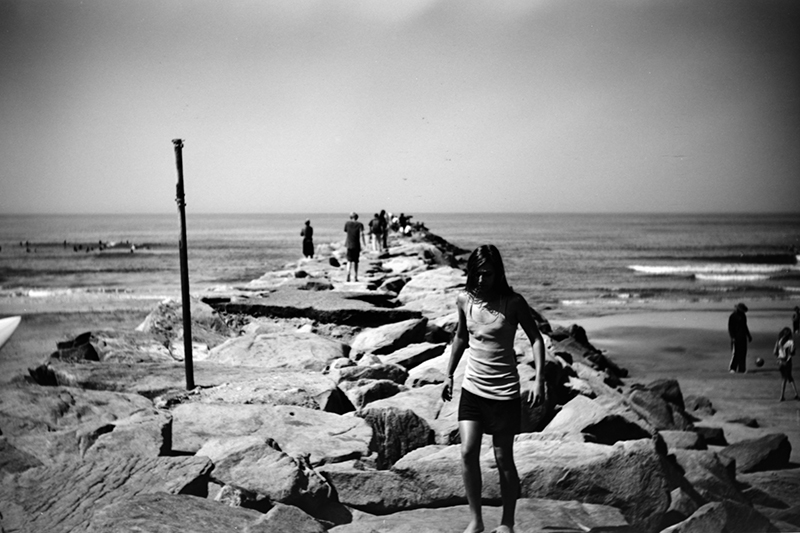Excerpt:
Sea-level rise and man-made projects have left Oceanside with precious little beach space. That’s a problem if coastal life is part of your city’s identity.
In Oceanside, a coastal suburb about 40 miles north of San Diego, the palm trees sway and the temperature is almost always perfect. Fishermen cast their lines from the long, wooden pier. Teenagers with salt-bleached hair watch surfers ride glassy waves.
“Every day here feels like the most perfect summer day,” Mercedes Murray, 38, said as she lounged at Buccaneer Beach, a spot popular among locals.
There is just one problem: The sand is disappearing.
Where residents once played beach volleyball at Buccaneer, there are now berms of natural cobblestones that clatter around in the surf like pennies in a washing machine. Visitors who could once sprawl on wide stretches of sand near the pier must now compete for space on a narrow stretch studded with rocks.
A beach town cannot exist without a beach, and only about a third of the city’s 3.7 miles of coastline still has enough sand for people to enjoy. That’s a problem for a city that once beckoned tourists with the slogan, “Tan Your Hide in Oceanside,” and hosts several high-profile surf competitions.
Leaders here are now rushing to reimagine the shoreline in hopes that Oceanside can transform itself into a new kind of California beach town — before it is too late.
While many visitors, and even lifelong Californians, might see the state’s wide expanses of sand as part of the state’s natural beauty, the reality is that over decades, the coast has become a highly engineered marvel.
Millions of cubic yards of sand dredged from other parts of the coast or offshore sandbars known as “borrow sites” were added over decades in the last century to build postcard-worthy beaches like the one in Santa Monica. In Newport Beach and Ventura, narrow rock walls called jetties were installed decades ago to combat erosion and help keep those beaches replenished.
But a range of forces have conspired to pinch beaches all along California’s coastline. A recent study predicted that California could lose as much as 75 percent of its beaches by 2100, given projected sea level rise related to climate change.
Over time, beach sand gets swept out into the water. Some of it migrates toward other beaches in part of a complex phenomenon known as littoral drift.
If the shoreline were allowed to evolve and recede without human intervention, beaches could continue to exist as we know them. But in California, development in many places along the coast has created a hard barrier, stopping that natural ebb.
At the same time, dams and concrete canals have reduced the amount of river sediment flowing downstream that could help replenish beach sand. And nearby bluffs that would normally erode have been fortified to protect homes and railroad tracks built on top of them.
Oceanside has grown from a seaside resort town incorporated in 1888 to a major San Diego suburb with 172,000 residents. The flat, open stretch of coastline that once existed here was dramatically altered by two major projects.
During World War II, the United States built a Marine Corps base, Camp Pendleton, just north of the city, and it included a boat basin for ships heading into the Pacific. Later, in the 1960s, the city dredged its own recreational harbor.
Over time, the boat basin and the harbor, protected by a network of rock jetties, began to stop sand from reaching the city’s beaches.
The U.S. Army Corps of Engineers dredges the mouth of the city harbor every year. It costs the city an additional $600,000 to pump thin, silty sediment from the San Luis Rey River onto beaches just south. But the effort typically yields just enough sand to cover a small area, and it is quickly swept away.
Other communities in San Diego County were contending with the same problem, so over the years, local governments banded together on a few major sand replenishment projects. But those, too, have proven to be fleeting solutions.
In recent years, as the sand’s disappearance grew more extreme, longtime Oceanside residents banded together to form Save Oceanside Sand, or S.O.S., and began lobbying their elected leaders.
“There’s been no focus on a solution since the problem started,” said Bob Ashton, the group’s president “It’s kind of doing the same thing for 80 years and expecting a different outcome…”









